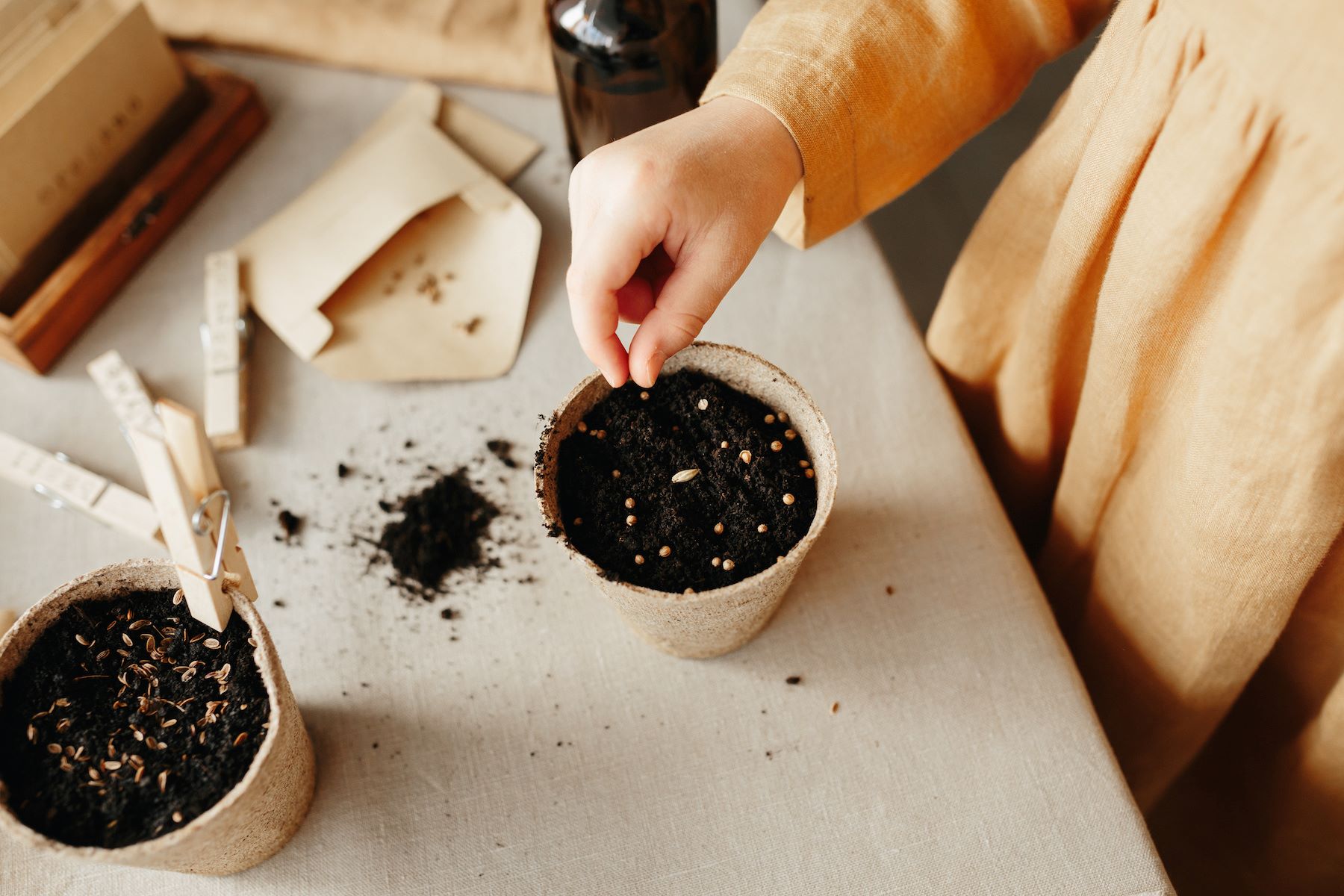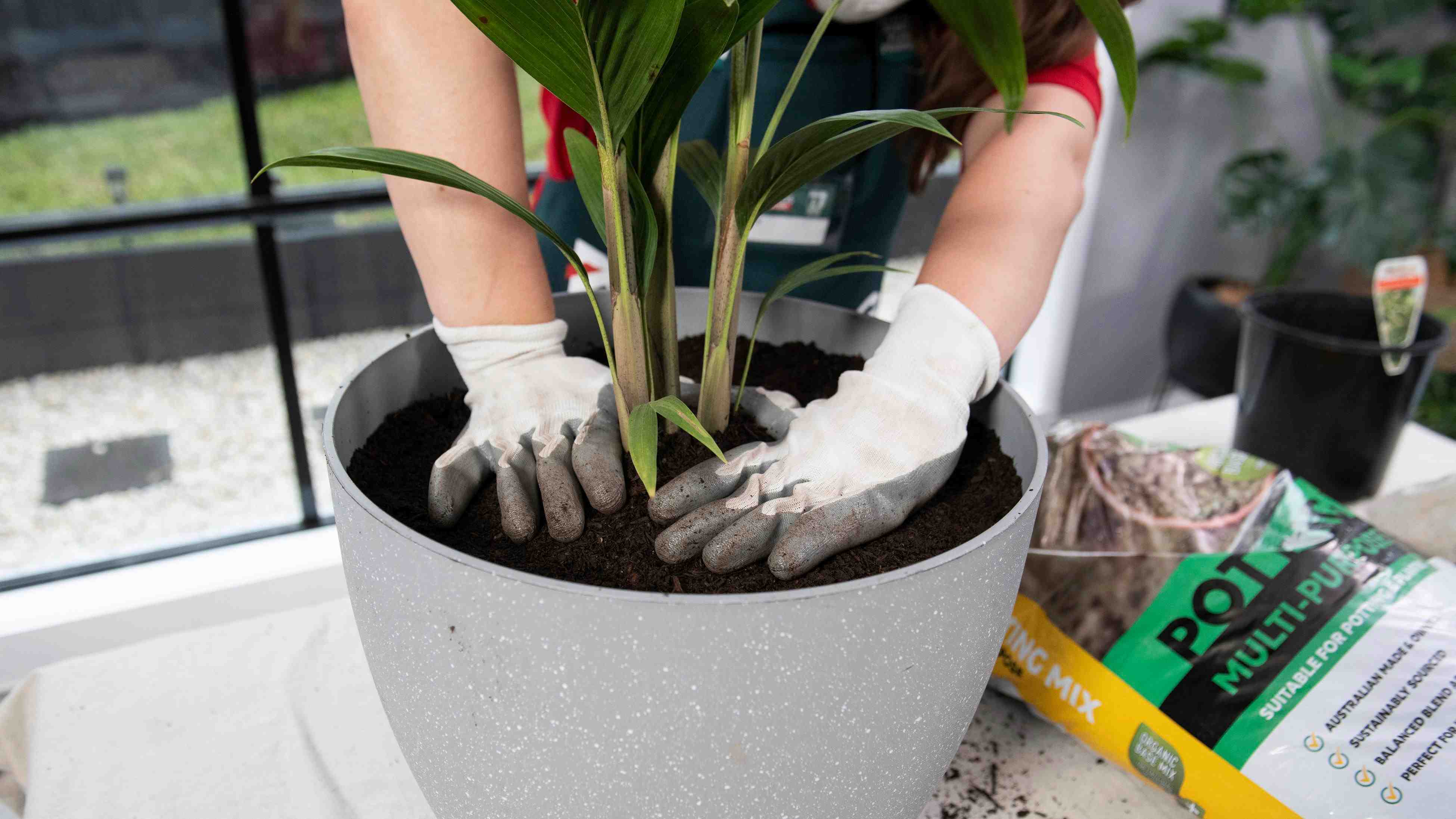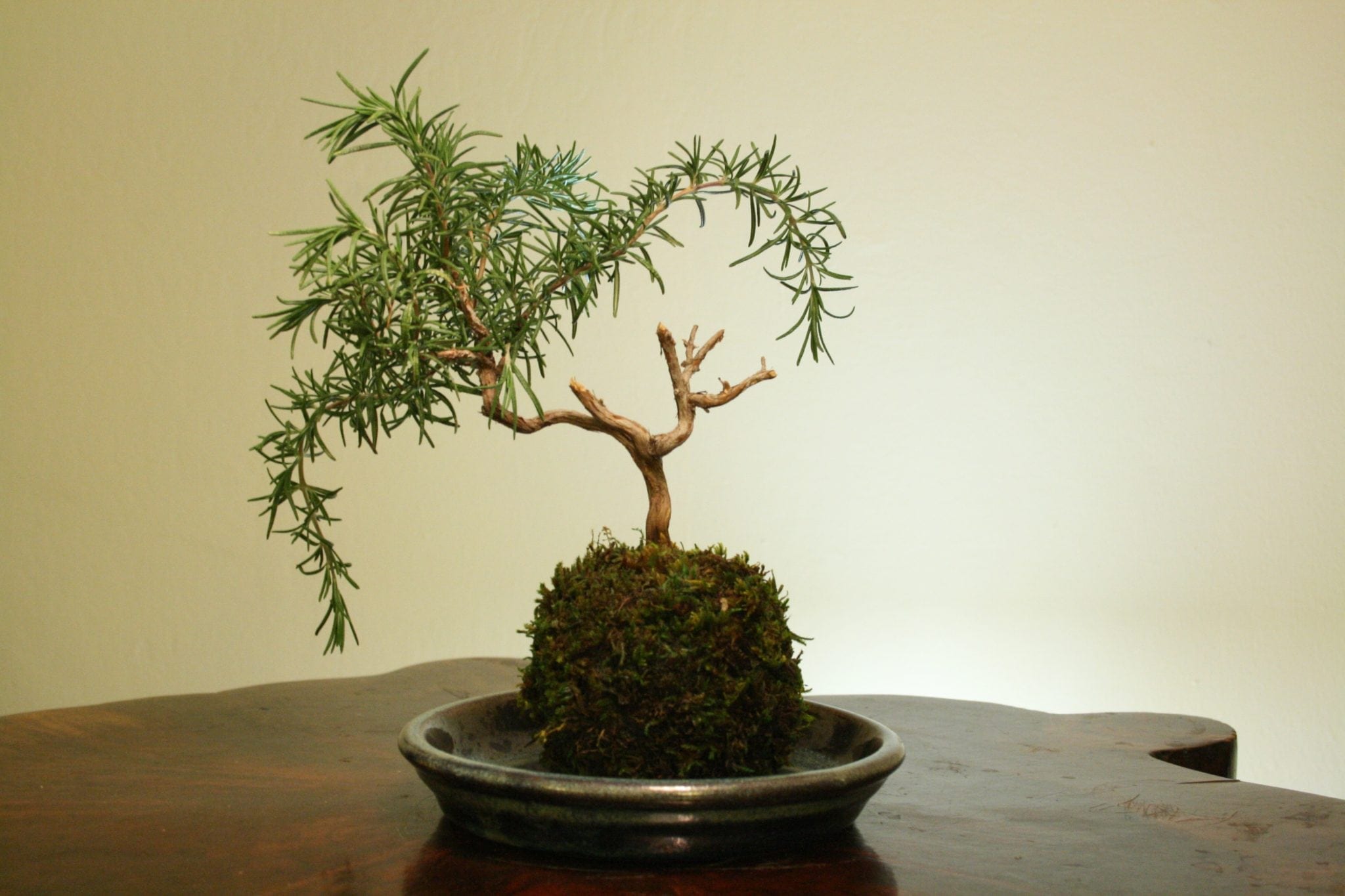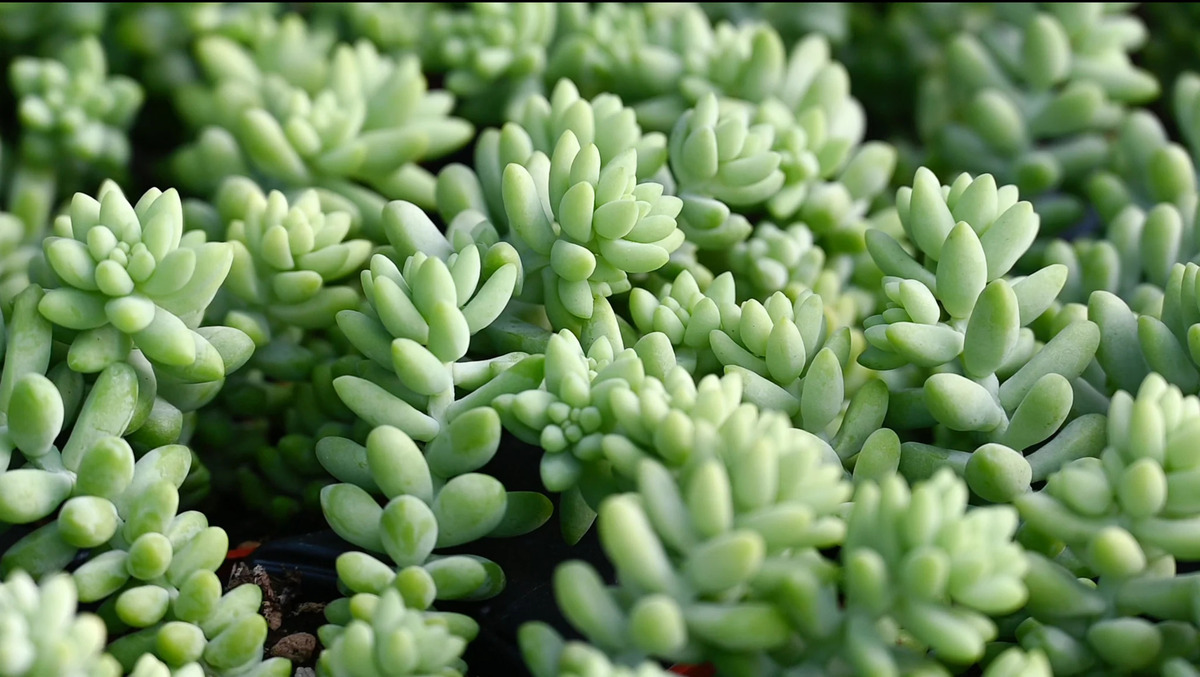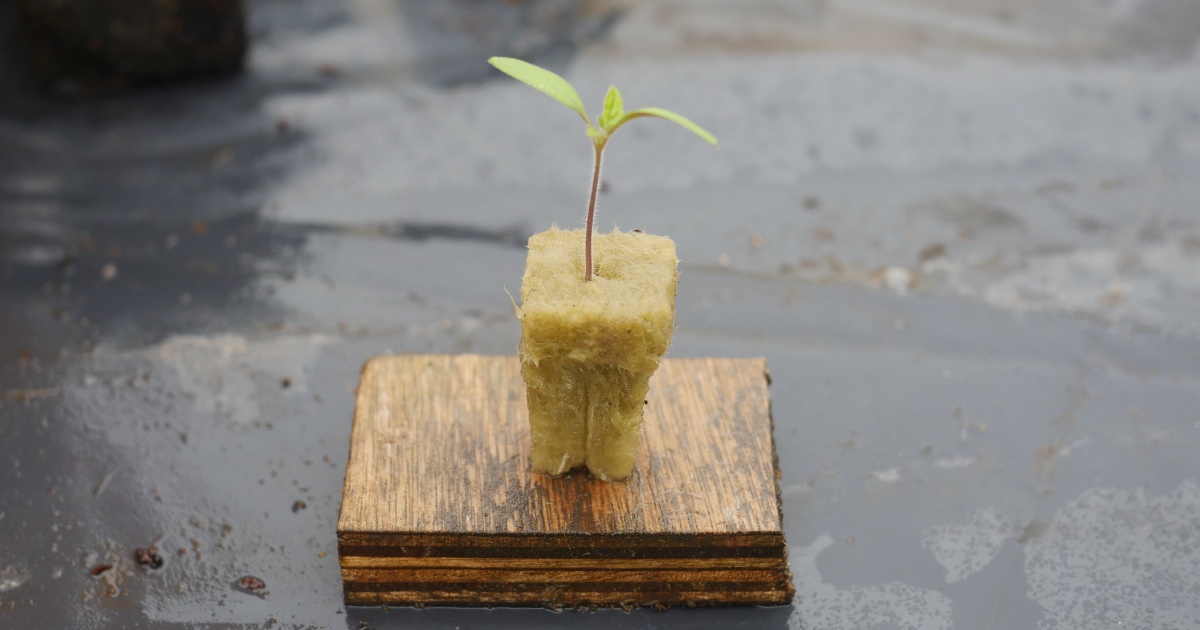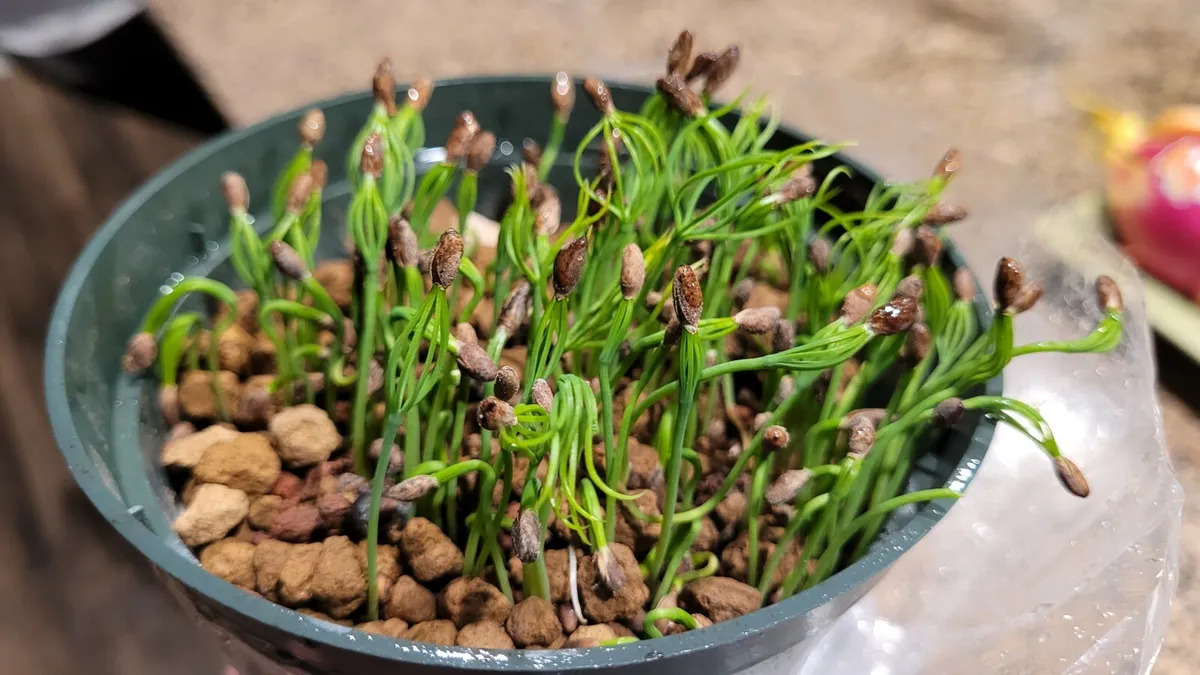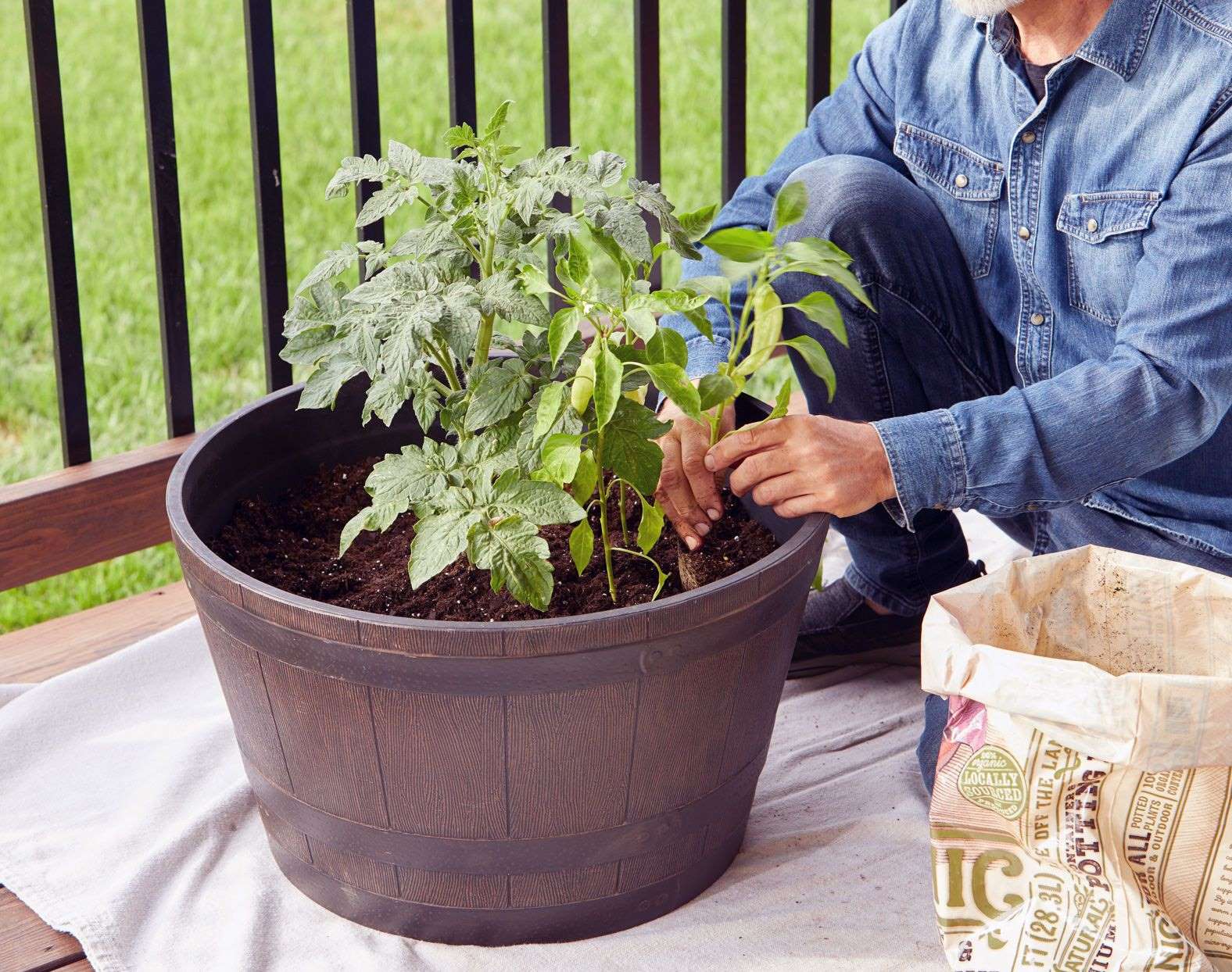Home>Gardening Techniques>Plant Care>How To Care For Rosemary Plants In Pots
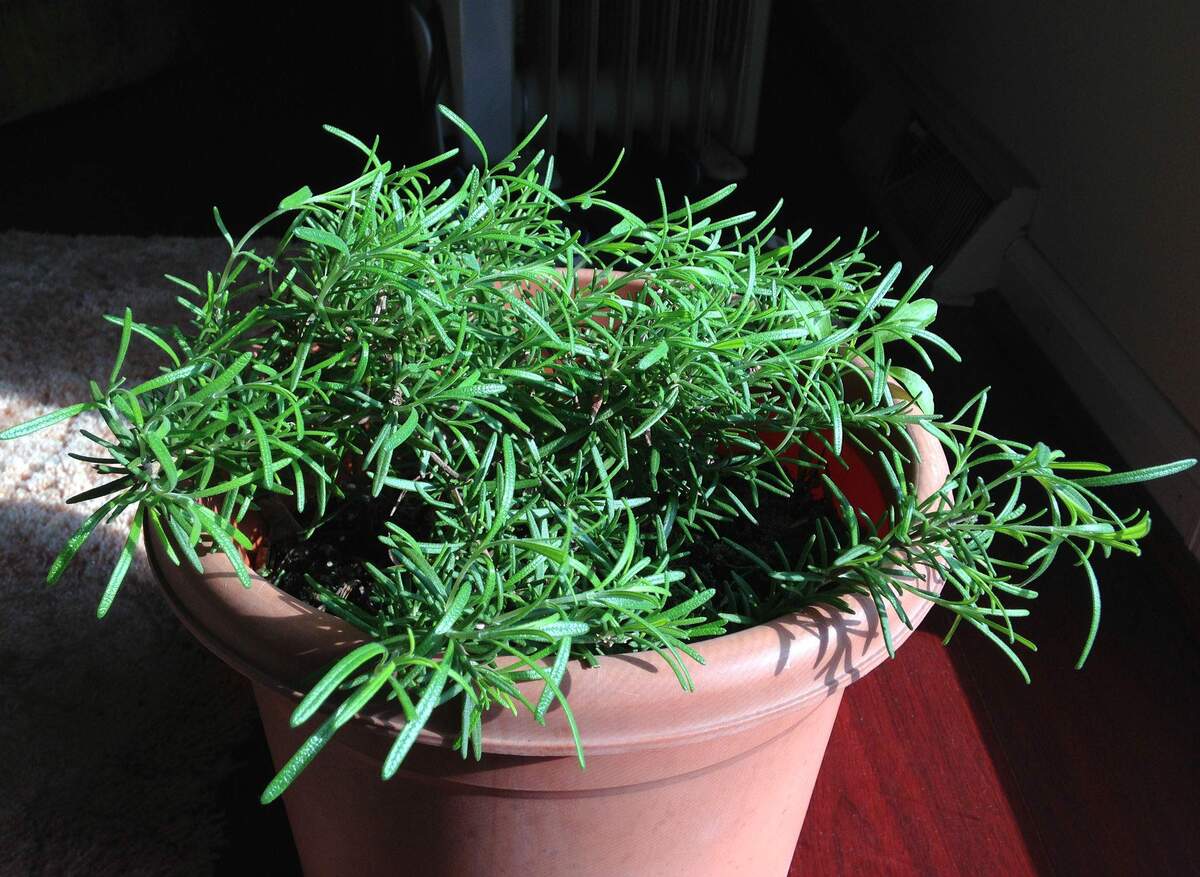

Plant Care
How To Care For Rosemary Plants In Pots
Modified: February 9, 2024
Learn the essential tips and techniques for caring for rosemary plants in pots. Discover the best practices for proper plant care to ensure healthy and thriving rosemary in your garden.
(Many of the links in this article redirect to a specific reviewed product. Your purchase of these products through affiliate links helps to generate commission for Chicagolandgardening.com, at no extra cost. Learn more)
Table of Contents
Introduction
When it comes to plant care, one versatile herb that deserves special attention is rosemary. Known for its aromatic fragrance and culinary uses, rosemary is a popular choice for planting in pots. Whether you have a small balcony, a sunny patio, or limited garden space, you can easily grow and care for rosemary plants in pots.
Rosemary (Rosmarinus officinalis) is a perennial herb that belongs to the mint family. It is native to the Mediterranean region and thrives in warm climates. With the right care and conditions, you can successfully cultivate rosemary in pots and enjoy its vibrant green foliage and distinct pine-like scent.
Why choose to grow rosemary in pots? There are several advantages to container gardening with this aromatic herb. Firstly, pots offer greater control over the growing conditions, allowing you to optimize sunlight exposure, soil composition, and moisture levels. Additionally, growing rosemary in pots makes it easier to protect the plant from pests and diseases. Plus, the portability of potted rosemary allows you to bring it indoors during colder months, ensuring its year-round survival.
In this article, we will provide you with comprehensive tips and guidelines to care for rosemary plants in pots. We’ll discuss topics such as choosing the right pot and soil, providing adequate sunlight, watering techniques, fertilizing, pruning, and more. By following these recommendations, you can ensure the health and vitality of your potted rosemary plants and enjoy fresh herbs for culinary delights or simply for their delightful aroma.
Choosing the Right Pot
Choosing the right pot is crucial for the success of your rosemary plants. When selecting a pot, consider the following factors:
- Size: Opt for a pot that has a diameter of at least 12 inches. Rosemary plants have a deep root system, and they need ample space to grow. A larger pot will also provide better stability and prevent the plant from toppling over.
- Drainage: Ensure that the pot has adequate drainage holes at the bottom. Good drainage is essential to prevent waterlogging, which can lead to root rot. If the pot doesn’t have drainage holes, you can drill them yourself or choose a pot with a removable tray to collect excess water.
- Material: Choose a pot made of materials that allow for proper aeration and moisture regulation. Terracotta or clay pots are ideal choices as they are porous and allow air and water to pass through. Avoid plastic pots as they can trap moisture and lead to root issues.
- Appearance: Consider the aesthetic appeal of the pot as well. Rosemary is a beautiful herb, so selecting an attractive pot can enhance the overall look of your garden or patio.
Additionally, it’s a good practice to choose a lightweight pot if you plan to move it around often. This will make it easier to reposition the pot based on sunlight requirements or changing weather conditions.
Once you have chosen the right pot, make sure to clean it thoroughly before planting your rosemary. Rinse it with water, scrub off any dirt or residue, and let it dry completely. This will help eliminate any potential pathogens or pests that may harm your rosemary plants.
Selecting the Right Soil
The choice of soil is crucial when it comes to growing healthy rosemary plants in pots. Rosemary thrives best in well-draining soil that mimics its native Mediterranean environment. Here are some key considerations for selecting the right soil:
1. Loamy and Well-Draining: Rosemary prefers a loamy soil that allows for proper drainage. It should be able to retain enough moisture to keep the roots hydrated, but not hold excess water that can lead to rot. You can create a well-draining soil mixture by combining equal parts of organic compost, sandy soil, and perlite or vermiculite.
2. pH Level: Rosemary thrives in slightly acidic to neutral soil, with a pH between 6 and 7.5. You can test the pH level of the soil using a home testing kit or consult with a local gardening expert for recommendations.
3. Nutrient-Rich: While rosemary doesn’t require overly fertile soil, it still benefits from the presence of organic matter. Incorporate nutrient-rich compost or well-decomposed manure into the soil mixture to provide essential nutrients for healthy growth.
4. Good Aeration: Rosemary roots require oxygen to function properly. To ensure good aeration, add perlite or vermiculite to the soil mixture. These materials help improve soil structure and prevent compaction.
When preparing the pot for planting, partially fill it with the well-draining soil mixture. Leave enough space to accommodate the root ball of the rosemary plant. Gently remove the plant from its nursery container, loosen the roots, and position it in the pot. Fill the remaining space with the soil mixture, lightly pressing it down to secure the plant in place.
Remember to water the newly potted rosemary thoroughly to help settle the soil and remove any air pockets around the roots. Regular watering and proper soil maintenance will ensure that your rosemary plants have a favorable growing environment, promoting healthy growth and longevity.
Providing Adequate Sunlight
Rosemary plants thrive in bright sunlight and require at least six to eight hours of direct sunlight daily. When growing rosemary in pots, it is important to provide them with adequate sunlight to ensure healthy growth and robust flavor. Here’s what you need to know about providing proper sunlight for your potted rosemary:
1. Location: Choose a sunny spot for your rosemary pot where it can receive the maximum amount of sunlight each day. Ideally, place the pot in an area that receives morning sun and some afternoon shade, as this can help protect the plant from intense midday heat during the summer months.
2. South-Facing Window: If you are growing rosemary indoors, select a south-facing window that receives ample sunlight throughout the day. Rotate the pot occasionally to ensure that all sides of the plant receive equal exposure to sunlight.
3. Reflective Surfaces: To maximize sunlight absorption, consider placing reflective surfaces around your potted rosemary. These surfaces can include white walls or light-colored stones that bounce sunlight back onto the plant, providing additional rays of light for optimal growth.
4. Artificial Lighting: In situations where natural sunlight is limited or not available, you can supplement it with artificial lighting. Use full-spectrum grow lights designed for indoor plants to provide the necessary light intensity and spectrum. Position the lights above the rosemary at a distance of 6-12 inches and adjust the duration based on the specific requirements of the plant.
Regular exposure to sunlight is crucial for the production of essential oils that give rosemary its distinct aroma and flavor. Insufficient light can lead to weak and leggy growth, reduced flavor potency, and increased vulnerability to pests and diseases. By ensuring that your potted rosemary plants receive ample sunlight, you can promote healthy foliage, vibrant growth, and a bountiful harvest of flavorful leaves.
Watering Rosemary Plants in Pots
Proper watering is essential for the health and vitality of your potted rosemary plants. While rosemary is drought-tolerant, it still requires regular watering to thrive. Follow these guidelines to ensure that you provide the right amount of water:
1. Test the Soil Moisture: Before watering, check the moisture level of the soil by inserting your finger about an inch deep into the soil. If it feels dry at that depth, it’s time to water. Avoid overwatering, as rosemary plants prefer slightly dry conditions.
2. Watering Frequency: Water your potted rosemary plants deeply, allowing the excess water to drain out through the bottom holes. Watering every 7-10 days during the growing season is usually sufficient, but adjust the frequency based on the specific needs of your plant, climate, and pot size.
3. Avoid Waterlogging: Good drainage is crucial for the health of rosemary plants. Never allow the pot to sit in a saucer of standing water, as the roots may become waterlogged and susceptible to rot. Empty any excess water from the saucer to prevent this issue.
4. Mulching: Applying a layer of organic mulch, such as wood chips or straw, around the base of your rosemary plant can help retain moisture in the soil and reduce water evaporation. Mulching also helps regulate soil temperature and suppress weeds.
5. Adjust for Seasonal Changes: During hot summer months, you may need to increase the frequency of watering, especially if your rosemary is exposed to direct sunlight. Conversely, reduce watering during cooler months or when your plant is in a dormant phase.
6. Watering from Below: Consider watering rosemary from below by placing the pot in a tray filled with water. This allows the roots to gradually absorb the required water without wetting the foliage. However, do not let the pot sit in water for an extended period.
Remember, it is better to underwater than to overwater rosemary plants. Soggy soil can lead to root rot and other diseases. By adhering to proper watering practices, you can ensure the health and vitality of your potted rosemary plants, allowing them to flourish and provide you with an abundance of aromatic leaves.
Fertilizing Rosemary Plants
Fertilizing your potted rosemary plants is important to provide them with the necessary nutrients for healthy growth and robust flavor. While rosemary is a relatively low-maintenance herb, it can benefit from occasional fertilization. Here are some guidelines for fertilizing your rosemary:
1. Organic Fertilizer: Opt for organic fertilizers, such as compost or well-decomposed manure, to nourish your rosemary plants. These natural fertilizers provide a slow and steady release of nutrients, promoting overall plant health.
2. Application Timing: Apply fertilizer to your rosemary plants once or twice a year. Start in early spring, just before the growing season begins. If desired, you can also fertilize again in mid-summer, especially if your plant shows signs of nutrient deficiency.
3. Compost Tea: Compost tea is an excellent option for feeding your potted rosemary. It is rich in nutrients and beneficial microorganisms, which can enhance soil fertility and plant health. Dilute the compost tea according to the instructions and apply it to the soil around the base of the plant.
4. Balanced Nutrients: Look for a balanced organic fertilizer with equal proportions of nitrogen, phosphorus, and potassium (NPK). The NPK ratio is usually printed on the fertilizer packaging, such as 10-10-10 or 5-5-5. This ratio ensures that your rosemary receives a balanced mix of essential nutrients.
5. Avoid Overfertilization: It’s important not to overfertilize your rosemary plants, as this can lead to excessive foliage growth at the expense of flavor and aroma. Overfertilization can also make the plant more susceptible to pests and diseases. Follow the recommended dosage instructions on the fertilizer package.
6. Nutrient Deficiency Signs: Keep an eye out for signs of nutrient deficiency, such as yellowing leaves, stunted growth, or poor flavor development. In such cases, consider applying a balanced organic fertilizer or foliar spray to provide the required nutrients to your rosemary plants.
Remember that while fertilizing can enhance the growth of your potted rosemary, it is not a substitute for good soil and proper care. It is always a good practice to maintain a healthy and balanced environment for your plants through proper watering, adequate sunlight, and regular pruning. With the right fertilization routine, your rosemary plants will thrive and provide you with a bountiful harvest of aromatic and flavorful leaves.
Pruning and Shaping Rosemary Plants
Pruning plays a crucial role in maintaining the health, shape, and appearance of your potted rosemary plants. Regular pruning helps to stimulate growth, prevent the plant from becoming woody, and maintain a compact and bushy shape. Here are some guidelines for pruning and shaping your rosemary plants:
1. Timing: Prune your rosemary plants in early spring, just before the growing season begins. Avoid heavy pruning in late summer or fall as it may hinder the plant’s ability to withstand colder temperatures.
2. Hand Pruning: Use clean and sharp pruning shears or scissors to trim your rosemary. Start by removing any dead, yellowing, or diseased branches or leaves. Next, selectively prune the longer and leggier branches to promote a more compact form.
3. Size Control: Regular pruning helps control the size of your rosemary plant. If it tends to grow too large or out of control, trim back the branches by one-third. This will help maintain a more manageable and aesthetically pleasing size.
4. Pruning Shape: Rosemary can be shaped into various forms, such as a rounded bush, cone, or even topiary. To achieve the desired shape, selectively prune the branches accordingly. Remember to step back occasionally to assess your progress and make adjustments as needed.
5. Harvesting Pruning: When pruning, you can simultaneously harvest rosemary leaves for culinary use. Simply cut off the leafy stems, leaving a few inches of growth behind to encourage regrowth. Frequent harvesting also helps promote bushier growth.
6. Pruning Frequency: For most rosemary varieties, a light pruning once or twice a year should suffice. However, certain varieties may benefit from more frequent pruning, especially those with a tendency to become leggy or unruly.
Pruning not only helps maintain the shape and size of your rosemary plants but also promotes better airflow and sunlight penetration, reducing the risk of fungal diseases. After pruning, ensure that you remove any debris or fallen leaves from the pot to prevent potential fungal or pest issues.
By regularly pruning and shaping your potted rosemary plants, you can enjoy a healthier, more attractive, and more productive herb garden.
Preventing Pests and Diseases
Preventing pests and diseases is essential for maintaining the health and vitality of your potted rosemary plants. While rosemary is generally a hardy herb, it can still be susceptible to certain issues. Here are some tips to help prevent pests and diseases from affecting your rosemary:
1. Good Air Circulation: Proper air circulation is crucial in preventing fungal diseases. Avoid overcrowding your potted rosemary plants and ensure that there is ample space between them to allow for airflow. Trim any excess foliage to improve air circulation within the plant.
2. Well-Draining Soil: Rosemary plants are prone to root rot if the soil is excessively moist. Ensure that your potting soil is well-draining and avoid overwatering. The proper soil mix, along with maintaining a suitable watering schedule, will help prevent root-related issues.
3. Sanitary Practices: Regularly inspect your rosemary plants for signs of pests or diseases. If you notice any diseased or infested branches or leaves, promptly remove them to prevent further spread. Also, clean your pruning tools between cuts to minimize the risk of transmitting diseases.
4. Natural Pest Control: If you encounter pests on your rosemary plants, such as aphids or spider mites, try using natural methods like spraying the plant with a mixture of mild soapy water or neem oil. These options are environmentally friendly and help control pests without harming beneficial insects.
5. Companion Planting: Consider companion planting with other pest-repellent herbs or flowers to deter pests from infesting your rosemary. Plants such as marigolds, lavender, or thyme can help repel common pests and create a more diverse and robust garden ecosystem.
6. Regular Inspection: Take the time to regularly inspect your rosemary plants for any signs of pest damage, such as holes in the leaves or wilting. Early detection allows for timely intervention, minimizing the potential impact of pests or diseases on your plants.
Remember that prevention is the key to keeping your rosemary plants healthy and pest-free. By implementing these preventive measures and promptly addressing any issues that arise, you can ensure the longevity and productivity of your potted rosemary plants.
Harvesting and Using Rosemary Leaves
Harvesting rosemary leaves is a rewarding experience that allows you to enjoy the fresh flavors and aromas of this versatile herb. Here’s a guide on when and how to harvest your rosemary leaves, as well as some creative ways to use them:
1. Timing: Wait until your rosemary plant is well-established and has sufficient foliage before harvesting. For mature plants, you can start harvesting leaves after the first year of growth. Harvesting can be done throughout the year, but it’s best to prune lightly during the spring to encourage new growth.
2. Harvesting Method: To harvest rosemary, simply snip off the leafy stems using clean pruning shears or scissors. Cut just above a leaf node or where the stem meets another branch. This will encourage new growth and keep your plant healthy.
3. Fresh vs. Dried: Rosemary can be used fresh or dried. Fresh leaves have a stronger flavor and are great for immediate use, while dried leaves have a more concentrated flavor and are excellent for long-term storage.
4. Drying Rosemary: To dry rosemary, tie the harvested branches together at their bases and hang them upside down in a well-ventilated, shady area. Once the leaves are completely dried (typically in 1-2 weeks), crumble them off the stems and store them in airtight containers.
5. Culinary Uses: Rosemary is a versatile herb that adds a delightful flavor and fragrance to a variety of dishes. Use fresh or dried rosemary in marinades, salad dressings, roasted meats, poultry, stews, and soups. It can also be infused into oils and vinegars, or used to flavor homemade bread and focaccia.
6. Infused Water or Tea: Rosemary leaves can also be used to infuse water or make a soothing herbal tea. Add a few fresh or dried leaves to a pitcher of water or steep them in hot water for a fragrant and refreshing drink.
7. Homemade Potpourri or Sachets: Use dried rosemary leaves to create your own potpourri mix or to fill homemade sachets. The aromatic fragrance of rosemary will add a pleasant scent to your home or drawers.
Remember to harvest only what you need, leaving enough foliage on the plant for it to continue growing and thriving. Regular harvesting not only provides you with fresh herbs but also helps maintain a compact and bushy shape in your rosemary plant.
Whether you use rosemary in your favorite recipes, as a fragrant decoration, or for its therapeutic properties, harvesting and utilizing rosemary leaves adds a delightful touch to your culinary and creative endeavors.
Conclusion
Caring for rosemary plants in pots is an enjoyable and rewarding experience that allows you to enjoy the beauty, fragrance, and flavors of this versatile herb. By following the guidelines and tips outlined in this article, you can ensure the health and vitality of your potted rosemary plants, whether they adorn your balcony, patio, or windowsill.
From choosing the right pot and soil to providing adequate sunlight, water, and nutrients, each aspect of plant care plays a crucial role in the success of your rosemary plants. Additionally, by implementing preventive measures and proper pruning techniques, you can maintain the shape, health, and pest-free nature of your plants.
As you reap the rewards of your efforts, don’t forget about the joy of harvesting and using rosemary leaves. Whether you enjoy the fresh flavors in your culinary creations or savor the aromatic scent in your home, rosemary can enhance your everyday experiences.
So go ahead and embark on your journey of caring for potted rosemary plants. With a little knowledge, patience, and care, you can cultivate thriving plants and reap the benefits of having this remarkable herb at your fingertips.
Happy gardening and may your rosemary plants flourish with vitality and beauty!
